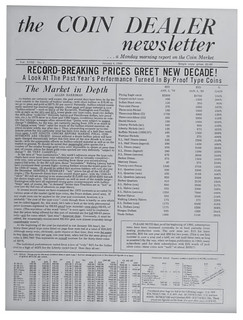
PREV ARTICLE
NEXT ARTICLE
FULL ISSUE
PREV FULL ISSUE
HOW THE RARE COIN BUSINESS HAS CHANGEDMichael Garofalo entered the coin business as a professional dealer in 1979. His "How the Rare Coin Business has Changed" article for the Greysheet recounts the evolution of the industry as third-party grading and the Internet changed the dynamics of the market. Here are some excerpts. -Editor
At the shows, most dealers had a certain area(s) of the U.S. rare coin market that they liked and understood very well. They knew the tough dates, the better struck issues, the coins that typically had great luster. They knew which coins were the most undervalued and they knew how to grade those coins well. And that is exactly where their inventory was centered. Dealers specialized in Colonials, early Copper and maybe early Type coins. Other dealers specialized in different denominations and their cases might be full of Barber coinage, Standing Liberty Quarters, or Classic Commemoratives. They had lots of the coins in which they specialized. You would rarely see dealers that had all types of United States coins and, in addition, had all types of Foreign or Ancient coins as well as U.S. or World Currency in their stock. Coin shows had special areas exclusively for dealers selling Foreign or Ancient coins or Currency. Most collectors had a specialty too and they knew the dealers who catered to their special interests. Prices moved weekly as reported in the Greysheet and auction results were top stories in Coin World and Numismatic News. Now fast forward a decade... -Editor In the mid to late 1990s the technology had sufficiently advanced that communications were better and exponentially faster and digital images provided an entirely new venue for coin trading—the online dealer! Local coin shops still exist and will continue to survive in larger cities but the numbers of coin shops have dwindled. The collectors and investors in rural parts of the country have access to more coins than you can see at every major coin show combined. The collectors and major dealers, for the most part, were aging by the start of the 21st century and the newer generation of dealers and collectors were more inclined to see what was being offered on the Internet than they were to drive across the country to attend a coin show. Local, regional and even some national shows became only a shell of what they were in the heydays of the 1980s. The 2000s brought new buyers to those dealers who spent their money on technology. Having great, large, clear images of coins and currency became a prerequisite for gaining online market share. The online dealers' way of doing business, no intrusions and no pressure, made customers feel comfortable as did the great images and the money-back guarantees. See the complete article online, including a profile and quote from Tom Caldwell, Founder and President of Northeast Numismatics. -Editor
To read the complete article, see:
Wayne Homren, Editor The Numismatic Bibliomania Society is a non-profit organization promoting numismatic literature. See our web site at coinbooks.org. To submit items for publication in The E-Sylum, write to the Editor at this address: whomren@gmail.com To subscribe go to: https://my.binhost.com/lists/listinfo/esylum All Rights Reserved. NBS Home Page Contact the NBS webmaster 
|

